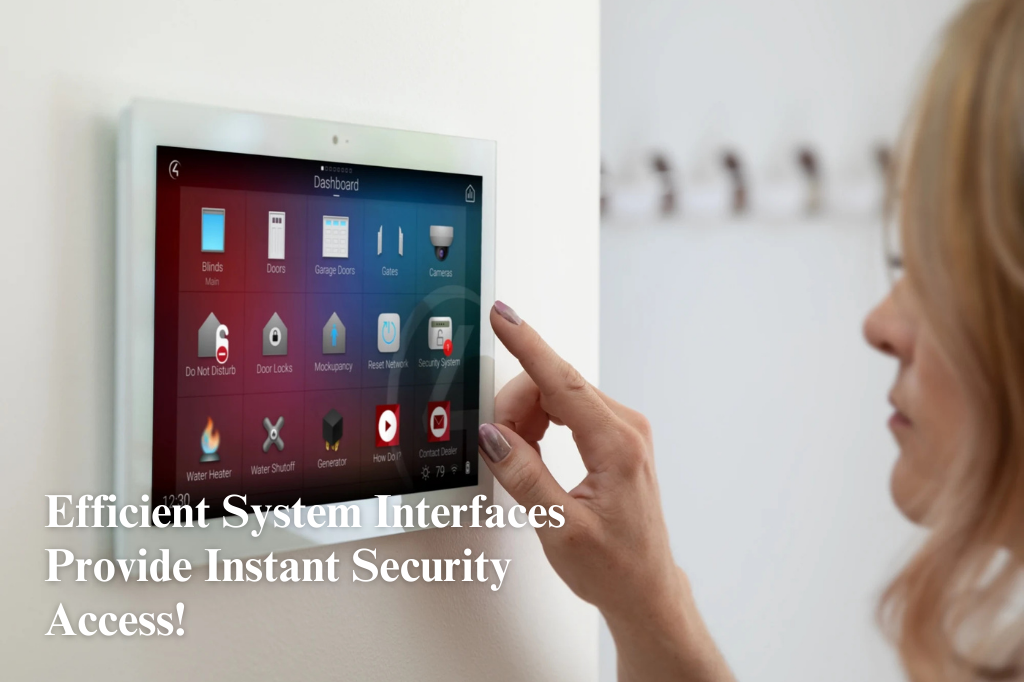How User Interfaces Influence Security System Performance
 Anthony Allen
Anthony Allen
Introduction:
When it comes to security systems, the interface through which users interact can make or break the overall effectiveness of the system. User interfaces (UIs) bridge the gap between complex security technology and everyday users, simplifying how systems are controlled and monitored. Whether for residential, commercial, or industrial use, a well-designed UI enhances both the ease of use and the system’s ability to function at its highest potential. In contrast, a poorly designed UI can create confusion, leading to delayed reactions and potential security vulnerabilities.
1. Simplifying System Operations Through UI Design
Security systems often come with a range of features, from alarm settings to surveillance camera controls. Without a clear and user-friendly UI, navigating these features can become overwhelming. A simplified interface can guide users through complex tasks like setting up schedules for alarms or managing different access levels with minimal effort. Systems with simple, intuitive controls encourage users to engage more actively, reducing the chances of mistakes that could compromise security. In contrast, overly complicated systems can lead to improper configuration, leaving potential loopholes open for breaches.
2. Reducing Human Error Through Better UI
Human error is one of the biggest challenges in managing security systems. Often, users might forget to arm a system, misinterpret an alert, or struggle with complex menu options. A well-thought-out UI mitigates these risks by providing straightforward instructions, visual cues, and automated prompts that guide the user through important tasks. Systems that offer interactive feedback, such as confirming successful actions (like arming an alarm), help prevent errors that could lead to security breaches. On the flip side, poorly designed UIs increase the likelihood of user errors, making the system less reliable in critical situations.
3. Enhancing User Engagement with Customizable Options
Customization is key to ensuring a security system meets the unique needs of its users. A flexible UI that allows users to adjust settings—such as notification preferences, access levels, and display modes—makes the system more relevant to individual needs. For instance, a business owner may want different notification settings compared to a homeowner. UIs that provide easy-to-navigate customization options help users take full advantage of the system’s features, improving overall engagement and effectiveness. In contrast, a one-size-fits-all approach in UI design can limit the system's functionality for different users.
4. Integrating AI and Automation in Security UIs
The use of artificial intelligence (AI) and automation in security systems is growing. AI-powered interfaces, like those with predictive analytics or automatic threat detection, allow for faster, more accurate responses to potential risks. These systems can analyse data from cameras or sensors in real-time, alerting users to unusual activity. When AI is integrated into a simple and clear interface, it boosts the system’s efficiency by allowing users to focus on high-priority issues. However, if AI features are poorly integrated into the UI, they may overwhelm users with excessive data, reducing the system's effectiveness.
5. User-Friendly Mobile Interfaces for Remote Security Management
Many security systems now come with mobile apps that allow users to manage their systems remotely. A well-designed mobile UI enhances this remote control capability by providing clear, easy-to-use features that replicate the desktop experience. Users can arm or disarm systems, view camera feeds, and receive real-time alerts through a mobile device. The convenience of mobile UIs ensures that users stay engaged with their security systems no matter where they are. However, mobile apps with cumbersome interfaces can make remote management difficult, leading to missed alerts or delayed responses.
Conclusion:
The effectiveness of a security system depends not only on its technical capabilities but also on how easily users can interact with it. A well-designed user interface simplifies complex security features, reduces human error, and keeps users engaged with the system. From desktop dashboards to mobile apps, the UI plays a crucial role in the system's overall performance. As security technology advances, ensuring user-friendly interfaces will continue to be a key factor in maximizing security system effectiveness.
Subscribe to my newsletter
Read articles from Anthony Allen directly inside your inbox. Subscribe to the newsletter, and don't miss out.
Written by
